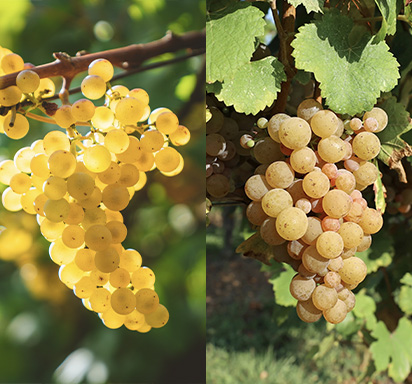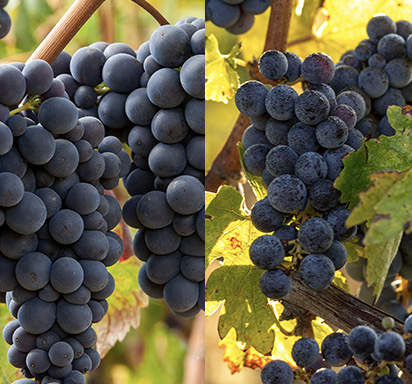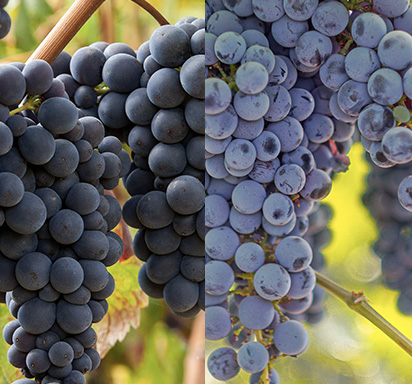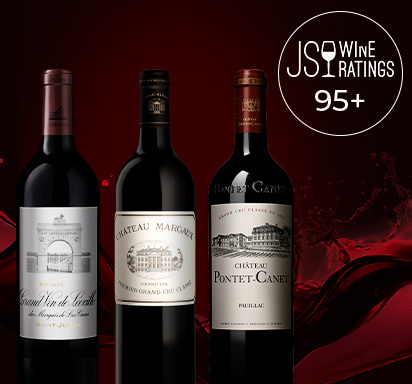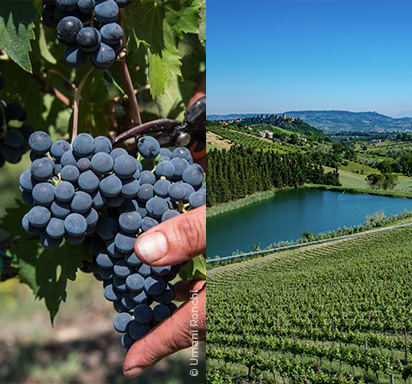Bordeaux Wine Region: Left Bank vs. Right Bank

The exceptional concentration of top-tier wineries and renowned appellations has long made Bordeaux a place of longing for fine wine enthusiasts and discerning hedonists around the world.
The Bordeaux region: A paradise for fine wine lovers
The Bordeaux wine region is among the most prestigious in France—indeed, in the entire world. With an impressive vineyard area of around 112,000 hectares and an annual production of approximately 5 million hectoliters, the Bordeaux region asserts itself as one of the most significant wine-growing areas globally.
The historical development of Bordeaux viticulture
The history of the Bordeaux wine region dates back to Roman times, when the first vines were cultivated along the banks of the Garonne and Dordogne rivers. A pivotal moment came in 1152 with the marriage of Eleanor of Aquitaine to Henry Plantagenet, which brought the entire region under English rule. This led to a flourishing wine trade, further fueled by the great popularity of the “clarets”—as Bordeaux wines were known in England.
In the 15th century, Aquitaine was recaptured by France, initially ending trade with England. Later, the Dutch became important trading partners, securing the region’s prosperity. During the colonial period, trade continued to thrive, and the "New French Clarets" with their deep, dark color gained international fame.
A historic milestone was the first official Grand Cru classification of Bordeaux wineries in 1855, in which 88 châteaux from Médoc, Sauternes, and Barsac as well as Château Haut-Brion were ranked into five tiers (Cru Classé). This classification still greatly influences the reputations of the châteaux today.
The Wine Regions on the Right Bank of Bordeaux
A unique classification system
The classification system of Bordeaux’s Right Bank—especially in Saint-Émilion—differs fundamentally from that of the Left Bank. It is regularly revised, which gives it a special relevance and modernity. First introduced in 1955, the Saint-Émilion classification considers not only terroir and wine quality, but also factors like reputation, marketing presence, and consistency over multiple vintages. It has three levels: Grand Cru Classé, Premier Grand Cru Classé B, and the prestigious Premier Grand Cru Classé A. Pomerol, on the other hand, has no official classification—quality there is determined by reputation and market value. This makes the Right Bank a dynamic, prestigious, and diverse segment of Bordeaux’s wine hierarchy.
Saint-Émilion
Saint-Émilion is known not only for its beautiful medieval town but also for its outstanding red wines. On the large limestone plateau, Merlot is the dominant grape, often complemented by Cabernet Franc. The classification is revised every 10 years and includes three tiers: Grand Cru Classé, Premier Grand Cru Classé, and Premier Grand Cru Classé A.
Saint-Émilion wines are full-bodied, juicy, and highly elegant. They are often accessible even when young but can also age gracefully for decades. Prestigious estates include Château Angélus, Château Cheval Blanc, Château Ausone, and Château Figeac.
Pomerol
Just a short drive from Saint-Émilion lies the Pomerol appellation, where heavier red wines emerge from limestone soils with clay content. These wines are known for their opulent and seductive fruit as well as their impressive aging potential.
Pomerol is home to the globally celebrated Château Pétrus. Other prestigious estates include Château Clinet, Château L’Evangile, Château La Conseillante, and Vieux Château Certan, whose 2016 vintage recently received a perfect 100-point rating from Robert Parker.
Fronsac and Entre-Deux-Mers
The Fronsac and Canon-Fronsac appellations produce silky red wines that often live in the shadow of their more famous neighbors but offer outstanding value for money. The Entre-Deux-Mers, located between the Garonne and Dordogne rivers, is known for its fruity and fresh white wines made from Sauvignon Blanc, Semillon, and Muscadelle. These dry Bordeaux whites pair especially well with delicate seafood such as oysters from the Arcachon Basin.
The Wine Regions on the Left Bank of Bordeaux
What does the "Grands Crus Classés" classification mean?
The classification system of the Left Bank, especially in Médoc and Graves, is marked by its historical consistency and market-based origins. The most famous classification, the 1855 "Classement des Grands Crus Classés", was created at the request of Napoleon III for the Paris World’s Fair and was based on market prices of the wines at that time, seen as an indicator of quality. It includes 61 châteaux ranked in five classes ("crus")—from Premier Cru to Cinquième Cru—and has remained largely unchanged (except for cases like the elevation of Mouton Rothschild in 1973). In contrast, the Graves classification (1953/1959) covers both red and white wines but without a ranking among the classified wineries.
At the top of the Left Bank are the stars of the 1855 classification: the legendary Châteaux Mouton Rothschild, Latour, Margaux, Haut-Brion, and Lafite-Rothschild—all Premier Crus with global prestige. Praised by influential U.S. wine critic Robert Parker, Bordeaux’s style has inspired and shaped the international wine world for decades.
Margaux
The Margaux appellation spans five communes and is known for its deep gravel soils mixed with sand and clay. Red wines from Margaux are noted for their exceptional elegance, with tannins that are polished rather than harsh. Well-known estates include Château Margaux (Premier Cru Classé), Château Palmer, and Château Rauzan-Ségla.
Saint-Julien, Pauillac, and Saint-Estèphe
In Saint-Julien, covering 920 hectares, the dominant grape of the Left Bank is cultivated. These wines are more robust than those from Margaux but show a remarkable balance of power and finesse, known for their consistency and aging potential.
Pauillac is home to three Premier Crus: Château Latour, Château Lafite Rothschild, and Château Mouton-Rothschild. The vineyards of Pauillac yield powerful red wines with well-integrated tannins, full-bodied fruit, and lively acidity.
In Saint-Estèphe, the northernmost appellation in the Médoc, the cuvées are even fuller and more powerful. Renowned estates such as Château Cos d’Estournel and Château Montrose produce wines with a robust body, great strength, and notable aging capacity.
Bordeaux White Wines: From dry elegance to sweet seduction
Alongside its internationally renowned reds, Bordeaux also offers outstanding white wines.
Pessac-Léognan
In Pessac-Léognan, southwest of Bordeaux, the best dry white wines of the region are produced, alongside excellent reds. On gravel and clay soils, Semillon and Sauvignon Blanc reach their full finesse. These whites are often aged in oak barrels like the reds.
Standout examples include Château La Mission Haut-Brion, Pape-Clément, and the legendary Premier Cru Classé Château Haut-Brion.
Sauternes and Barsac
In the southern appellations of Sauternes and Barsac, some of the greatest sweet wines in the world are produced. Here, the cold Ciron River flows into the warmer Garonne, creating morning mists that encourage the development of noble rot (Botrytis cinerea)—which gives the grapes an exceptionally high sugar content.
Top producers include the legendary Château d’Yquem, Château Guiraud, and Château Lafaurie-Peyraguey.
Different styles of Bordeaux red wine
The wines of the Right and Left Banks differ significantly in character—due to differences in terroir and grape varieties.
On the Right Bank, Merlot dominates on mostly clay-limestone soils. This results in full-bodied, complex wines with higher alcohol content and intense aromas of black fruits like blackberries, plums, and cherries. These wines are often approachable when young but can also age for decades.
On the Left Bank, Cabernet Sauvignon reigns on gravelly soils. These red wines are known for their powerful structure, black fruit aromas, and pronounced tannins that become smoother with age. They typically require more time to reach their full potential.
Bordeaux impresses with its exceptional diversity of terroirs and styles. No other region in the world has managed to replicate Bordeaux’s unique character. Yet the region does not rest on its laurels—it constantly evolves to maintain its position as one of the world’s leading wine-producing regions.
This combination of tradition and innovation, of historical depth and modern momentum, makes Bordeaux a fascinating destination for wine lovers.
The unique distribution system of Bordeaux wines
The Bordeaux wine region features a unique sales system. Strong commercial relationships exist between merchants ("négociants") and châteaux, where the merchants often purchase the wines while they are still aging in barrels. End customers can reserve these wines in advance through Bordeaux Wine Futures (en Primeur).
This system, known as the "Place de Bordeaux", allows châteaux to finance the next vintage with early revenue. Customers benefit from generally lower prices during the en Primeur phase than at final release. This clever distribution model plays a key role in the sustained success and global reach of Bordeaux wines.
Bordeaux grape varieties: Spotlight on Cabernet Sauvignon and Merlot
From classic Bordeaux blends to Napa Valley icons and Super Tuscans: Cabernet Sauvignon and Merlot are among the most popular red grape varieties in the world. Together, they form a brilliant synergy at the heart of many legendary fine wines—and have found success in countless expressions far beyond France’s borders. Learn everything about these beloved cuvées in our blog post!
Bordeaux vs. Burgundy: Two top wine regions compared
Grape varieties, winemaking methods, terroir—our blog article about these two wine legends explores how this triad shapes the character of two great regions. You may even discover why your palate leans more toward one than the other.
You may like
Malbec and Merlot are two beloved red wines, each with unique flavors, tannins,& origins. Malbec offers bold, dark fruit flavors with spice, while Merlot is smoother & more approachable. Learn their differences and food pairings.
4/1/2025Chardonnay and Pinot Grigio are two beloved white wines with distinct flavors. Explore their origins, flavor profiles, body, food pairings, and more to find out which wine suits your taste and occasion best.
3/27/2025Pinot Noir and Merlot are two beloved red wines with distinct flavors, aging potential, and food pairings. Discover their key differences to help you choose the perfect bottle for any occasion.
3/5/2025Pinot Noir vs. Cabernet Sauvignon—two iconic red wines with distinct flavors, body, and food pairings. Learn about their origins, characteristics, and how to choose the perfect bottle for any occasion in this in-depth guide.
3/4/2025During his recent visit to Bordeaux, the famous American wine critic, James Suckling, toured the vineyards to rediscover the 2022 vintage: discover James Suckling's new ratings in this article!
2/19/2025Montepulciano refers to both a red grape variety and a wine region. Discover the differences between the bold Montepulciano grape from central Italy and the elegant wines of Tuscany's Montepulciano region.
1/20/2025


























